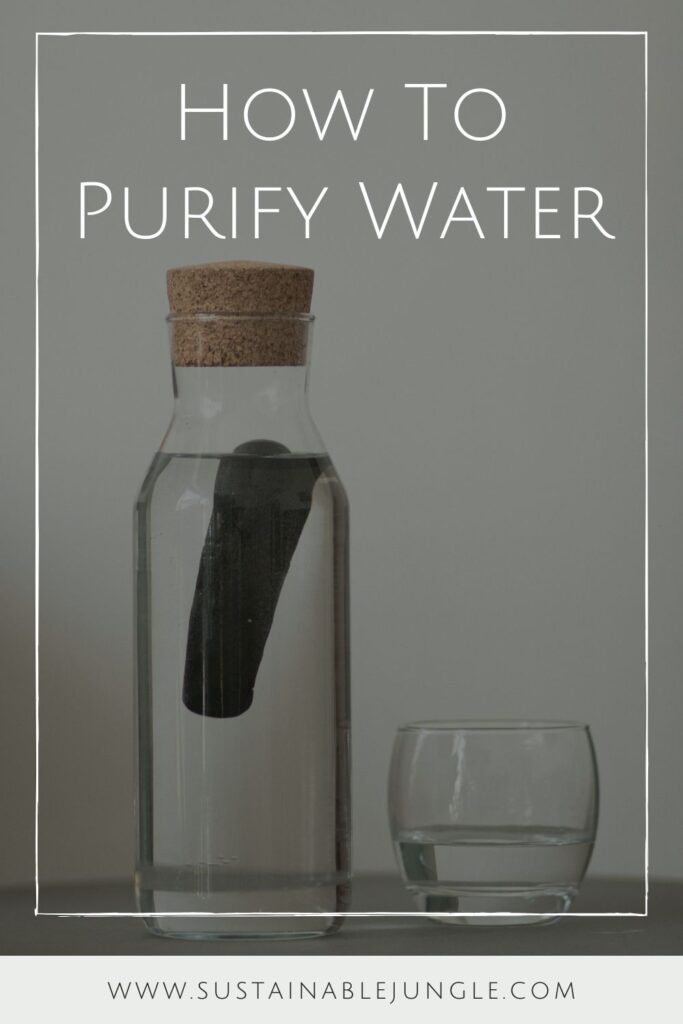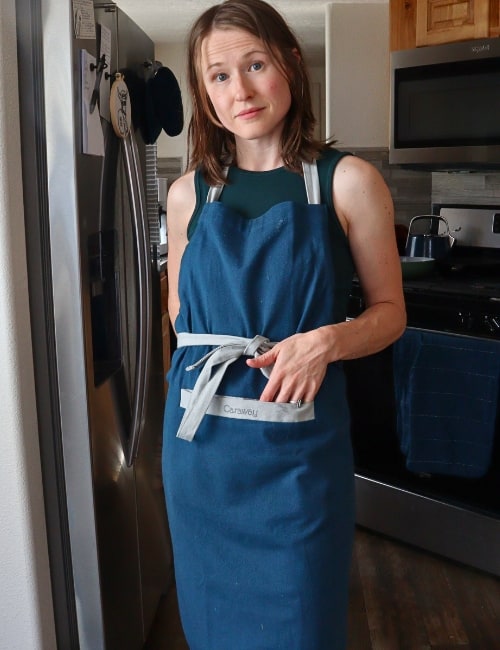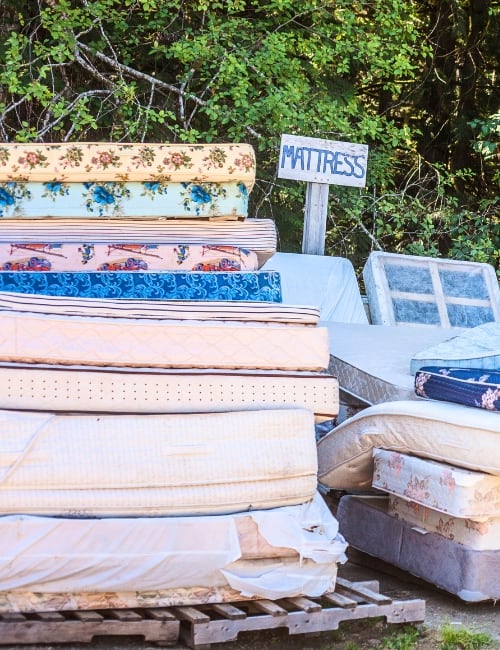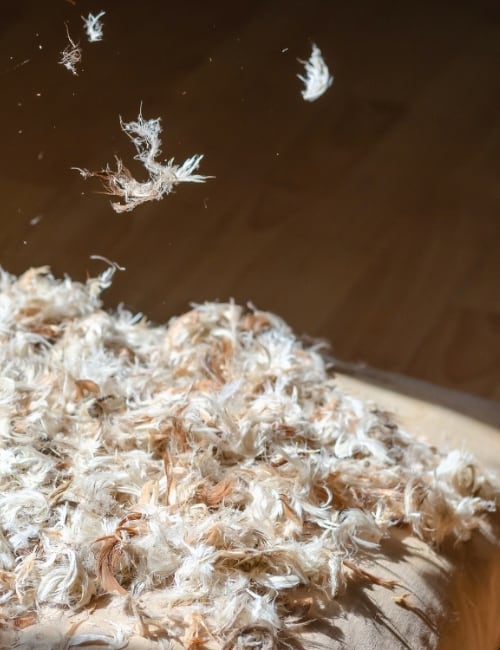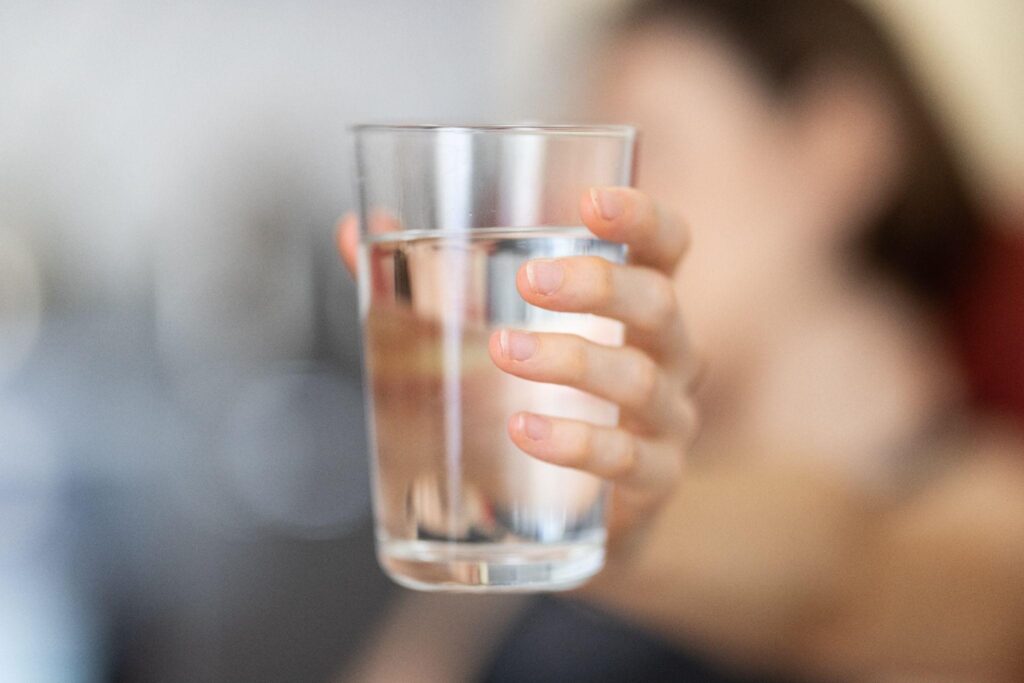
How to Purify Water: 5 Methods For Cleaner H2O
Have you drank enough water today?
If not, consider this your reminder to fill up that plastic-free water bottle.
But first, let’s talk about how to purify water.
While it’s easy to forget how fortunate we are, more than 884 million people around the world don’t have access to safe drinking water.
But if you’re reading this then you’re likely going to be in the same boat because you’re traveling to a developing country or going on an outdoor adventure.
Or maybe you’re aware of tap water contaminants; even if you live in the US, agricultural and industrial leaching into the water systems have been linked to more than 100,000 cancer cases.
Whatever your circumstance, sometimes, you just need the ABCs of water purification. So if you want to know how to purify tap water for drinking or how to purify river water for drinking before the big back-packing trip, sip on this article as we help you digest these five methods to clean drinking water.
*This post contains affiliate links
1. BOILING
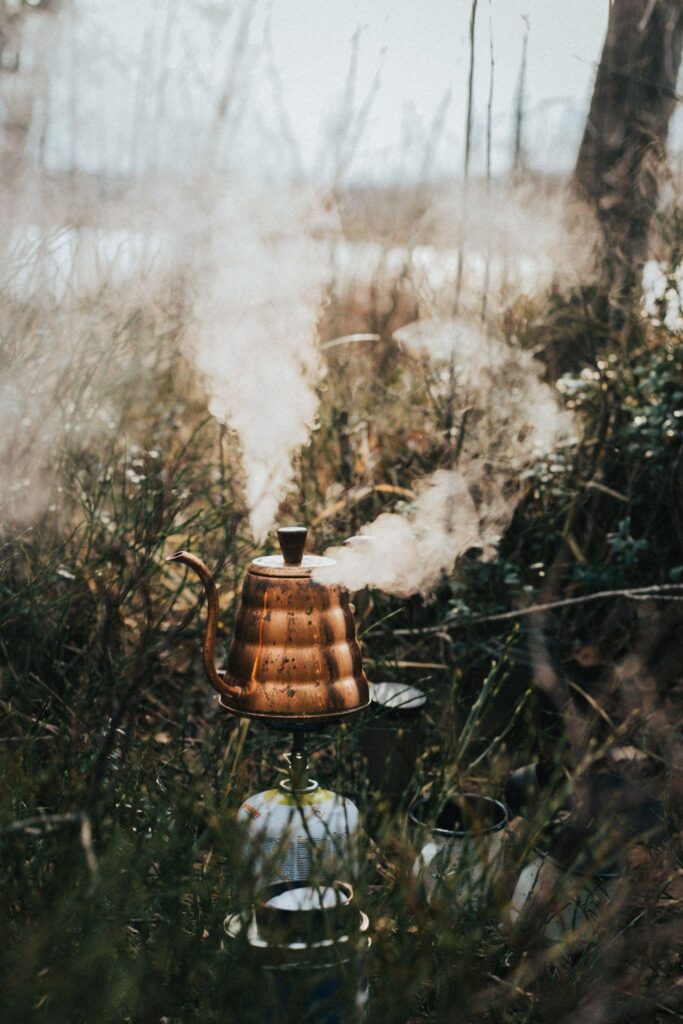
At its most basic, purifying water boils down to eliminating harmful bacteria (though true purification means getting rid of far more than that).
What’s the most surefire way to kill bacteria?
Heat.
There’s no more trusted method for how to purify contaminated water than boiling.
In fact, this method is actually promoted by the US Environmental Protection Agency as a way to disinfect water during emergency situations. While boiling will kill most disease-causing microorganisms—including viruses, protozoa, and pathogenic bacteria—it won’t remove or destroy other contaminants, like salts, heavy metals, and chemicals, and thus should only be used as a sole water purifying method in a pinch.
How does it work and how long do you boil water to purify it? Here are the steps:
- If the water is cloudy, let all sediment settle and use a coffee filter or clean cloth to filter it out.
- Bring the water to a roaring boil for at least one minute, three minutes if you’re at altitudes above 5,000 feet.
- Let the water cool before storing it in clean containers.
- A pinch of salt can improve the taste.
2. CHEMICAL TREATMENT
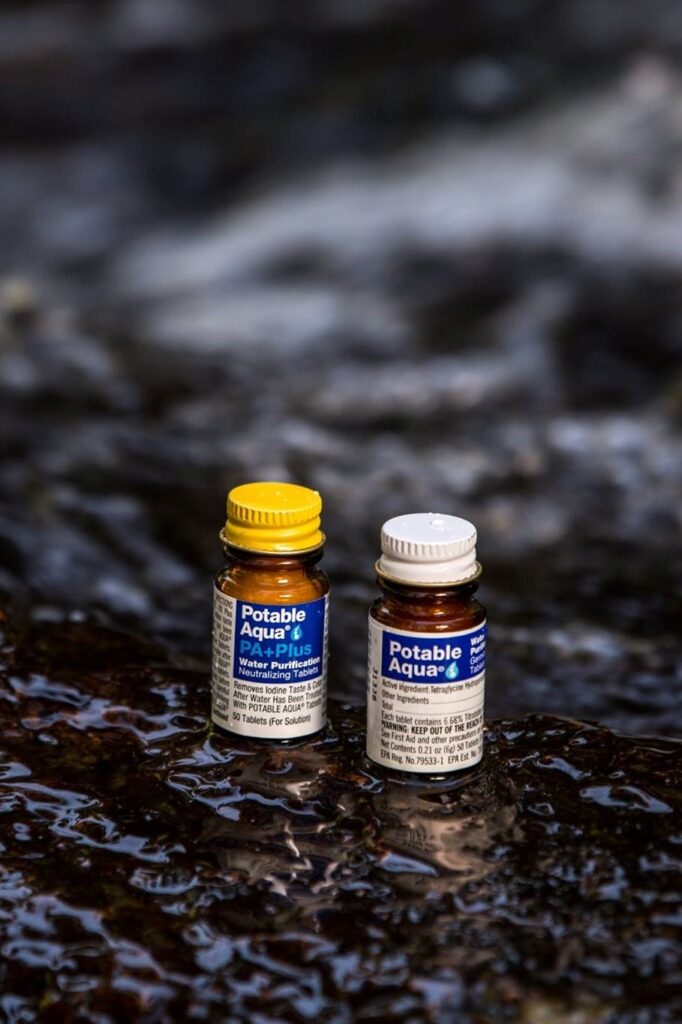
Disinfecting with the use of chemicals is another emergency option and there are several ways of purifying water with this method.
How to Purify Water with Bleach
Unscented, regular, non-expired household chlorine bleach can be applied to water that’s been filtered through a cloth or coffee filter. The label on the bleach should read either 6 or 8.25% sodium hypochlorite.
- Using a dropper, add 8 drops of 6% bleach or 6 drops of 8.25% bleach to a gallon of water. If the water is cloudy, very cold, or colored, double the amount.
- Stir the solution and let it stand for 30 minutes. You should notice a slight chlorine odor. If not, repeat the dosage and let it stand for an additional 15 minutes.
- If the chlorine taste is very strong, pour the gallon into another clean container and let it stand for a few hours before drinking.
How to Purify Water with Chlorine
If the idea of drinking bleach turns your stomach more than the giardia infection you risk by not, there are other somewhat less extreme methods for purifying river water, or water from other natural sources.
Both chlorine and iodine tablets are often used as a lightweight, on-the-go solution.
Keep it with your eco friendly camping gear when hiking, traveling, and for emergency situations. Chlorine dioxide tablets are effective against bacteria, viruses, and cysts like cryptosporidium.
If chlorine doesn’t sound much safer than bleach, remember that many countries—including 11 of the 15 members of the EU, known for their quality drinking water—use chlorine to treat their drinking water systems.
How to Purify Water with Iodine
Perhaps you have traumatic memories of this rust red liquid being painfully applied to scraped knees as a kid but we promise, it doesn’t sting when you dilute and swallow it.
Add two iodine purification tablets (or an equivalent amount of drops) to one quart of water, wait 35 minutes, and you’ll be protected against bacteria and protozoan parasites like Giardia Lamblia.
Other Chemical Water Purification Methods
Effervescent Aquatabs are another option that’s commonly used in areas with little access to clean water.
Using bleach-alternative sodium dichloroisocyanurate kills microorganisms that lead to typhoid, dysentery, cholera, and other water-borne diseases in 30 minutes.
Because all these methods contain chemicals that may overload your body, none of them are recommended for continuous use.
3. FILTRATION
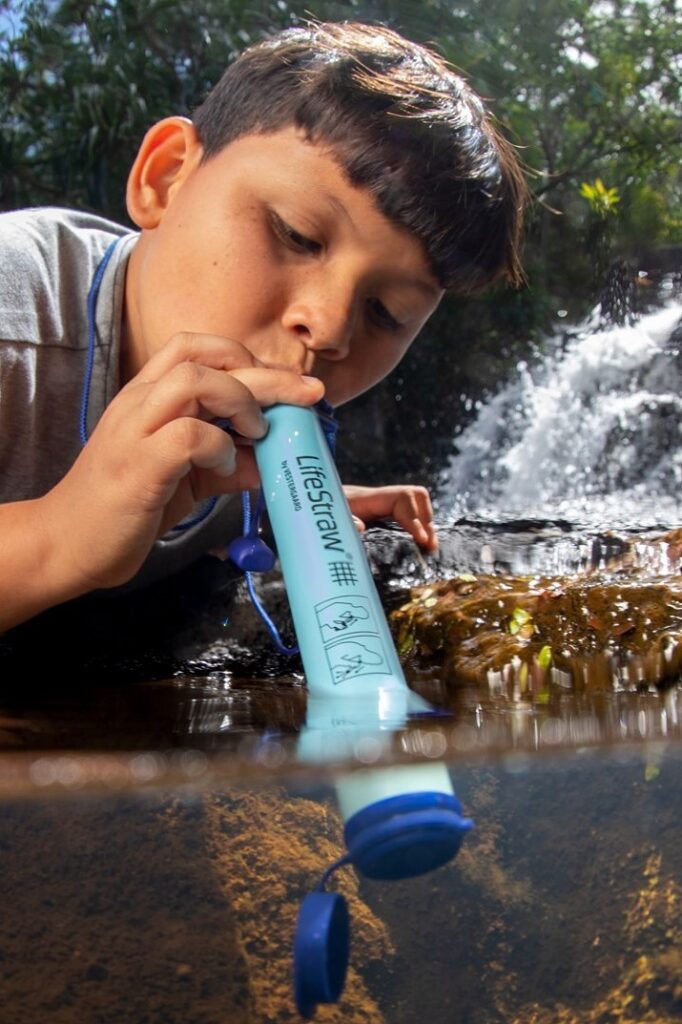
For continuous, day-to-day use, you’ll want something more along the lines of a water filter.
The term “water filter” has become nomenclature for anything that removes any degree of contaminant from drinking water, but in truth, water filtration refers to systems capable of removing a specific set of contaminants.
Water filtration systems possess multimedia filters that remove bacteria, parasites, protozoa, and particulates, but not viruses.
Some, such as Brita filters, can also reduce chlorine taste and odor.
Popular among hikers and cyclists, filtration systems like the MSR TrailShot Microfilter or Katadyn Hiker Microfilter are small enough to fit in a pocket and allow you to drink directly from the water source or fill up bottles.
They require squeezing or pumping to push water through an activated carbon filter.
Lifestraw, a Climate Neutral Certified brand and Certified B Corp, has both filtration and purification options. For every purchase, they also provide a year’s worth of safe water to a child in need.
For all water filtration systems, the filters themselves require regular maintenance (called backflushing) to remove contaminant buildup, and eventual filter replacement after a system-specified amount of gallons or liters are filtered.
4. PURIFICATION
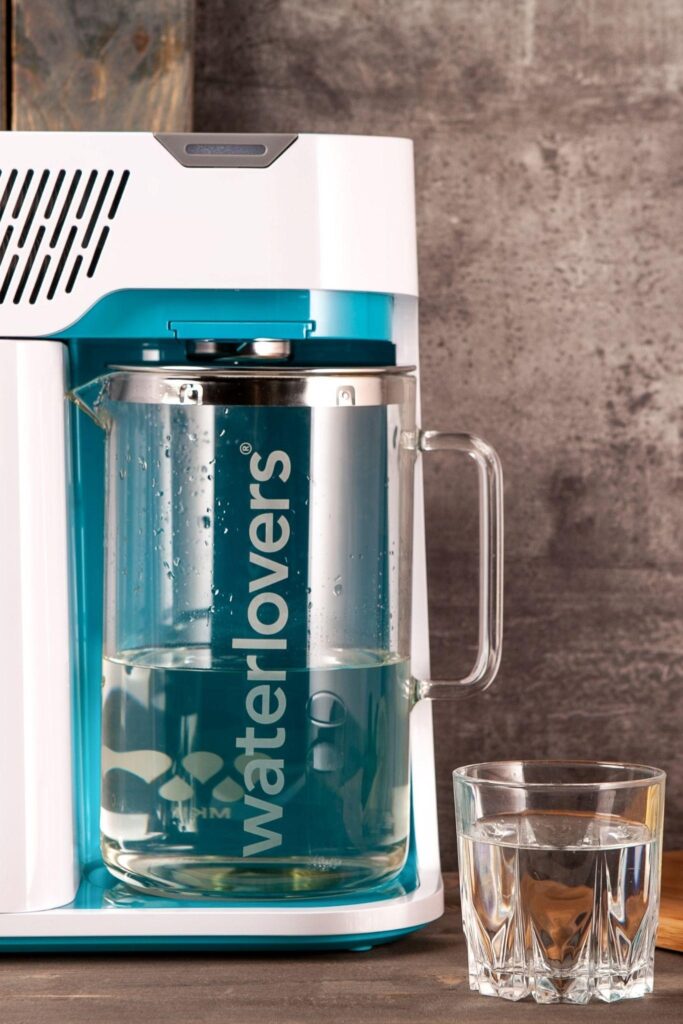
If you’re wondering how to purify tap water for regular at-home use, ideally plastic-free water filters or purification systems might be the answer you’re looking for.
Some water purification systems, like the world-famous Berkey, are gravity-fed and rely on filters (also called elements) to purify water and remove 200+ contaminants. Other, less eco-friendly versions, typically require electricity.
Its ability to remove viruses and pathogenic bacteria is why it’s classified as a purification system, rather than just a filtration system.
Like filtration systems, these remove bacteria, parasites, protozoa, and particulates, but have the added bonus of filtering out viruses, lead, asbestos, benzene, and other heavy metals, making them the most comprehensive type of “water filter”.
How Does Water Purification Work?
A water purifier’s first step involves microfiltration.
Here, the filter’s composition of different media types (often including a coconut shell carbon filter) forms micro-pores so small that viruses, bacteria, particulate matter, cysts, parasites, and other contaminants can’t pass through.
Because modern life has introduced a range of other contaminants to contend with (like agricultural pollutants, volatile chemicals, pharmaceuticals), the next step, absorption, uses the process of ion exchange to attract contaminant molecules, bonding them to the filter and keeping them out of the reserve flow of drinking water.
Finally, adsorption creates an ionic barrier that harnesses viruses’ electrostatic charge and pulls them into the filter. It essentially works like chlorine or iodine, without the need for chemicals.
How to Purify Water With Reverse Osmosis
More advanced systems use reverse osmosis (RO), a process that uses pressure to push water through a semipermeable membrane, removing up to 99.9% of total dissolved solids (TDS), including chemicals, VOCs, heavy metals, bacteria, viruses, and fluoride.
If you don’t like that your city uses fluoride to treat the water, a reverse osmosis water purification system is an alternative worth considering.
However, they have a higher price tag, require power, and have actually been considered by some to remove too many TDS, like essential minerals calcium, magnesium, potassium, and sodium—though one can, and arguably should, acquire these from a healthy, balanced diet.
Another common criticism of the RO system is water waste, and it’s a valid one. For whatever amount is run through an RO water filter, only approximately half that is rendered as drinkable water.
The rest is undrinkable “concentrate” or “reject” water that contains all the stuff filtered out.
So for every gallon filtered, half a gallon goes to waste.
However, that doesn’t necessarily need to be completely wasted. RO concentrate water may not be safe for drinking, but it is free of bacteria, viruses and has only dissolved impurities. This makes it safe for watering plants, doing dishes, laundry, and cleaning.
If you use a countertop RO system—which not only means you avoid a difficult under-sink install, but also puts you in total control of the waste tank—keep a tub or bucket near your filter to store your wastewater to reuse as you like.
Filter replacement waste is also another concern, but not one exclusive to RO systems. In fact, RO filters need to be replaced less often than many other filtration systems—anywhere from 6 months to 2 years, depending on filtration stage, use, and base quality of water.
How to Purify Water with UV Light
Another high-tech option is UV purification.
UV water sterilization works by adding safe, UV light to sterilize water-borne pathogens.
Most systems destroy up to 99.99% of harmful microorganisms without requiring chemicals but do need electricity—or in the case of Katadyn Steripen portable UV purifiers, at least battery power.
These are excellent options for those looking into how to purify your own water on the go
Still, with no water waste, required filter changes, or chemicals, UV water purification is the most eco friendly option if you want to purify your own water. Make sure to pair it with an eco friendly water bottle for maximum sustainability!
5. NATURAL MATERIALS
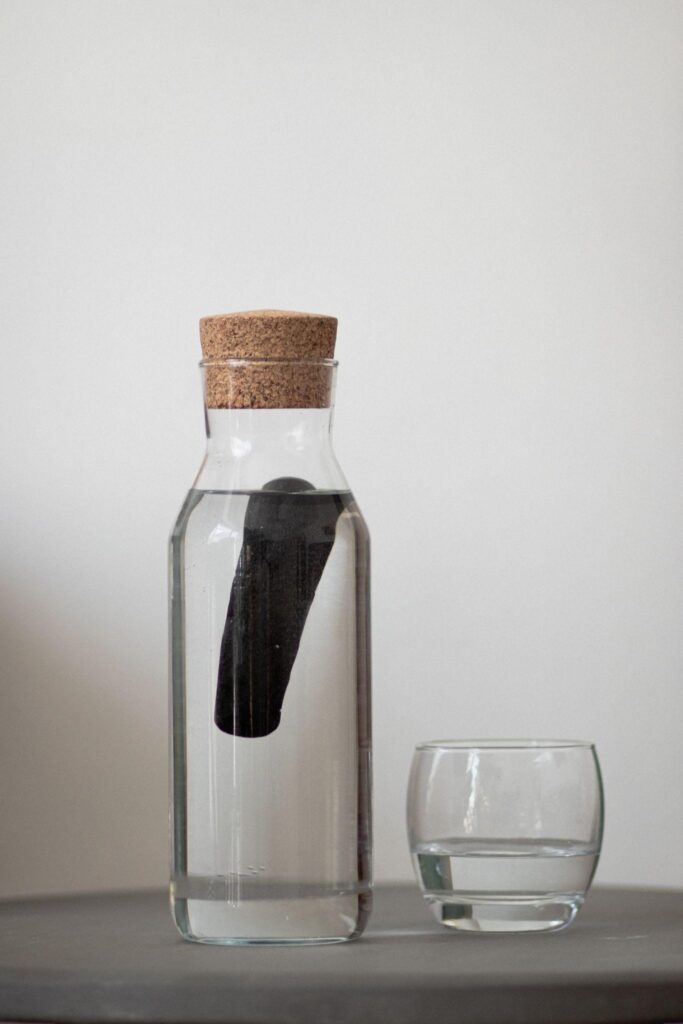
While you may not notice it, water is being filtered all the time.
Trees, sand, and other natural elements work like a carbon filter to trap debris, and sometimes bacteria, and prevent it from passing through.
Hence the collective interest in knowing how to purify water with natural materials. In fact, you may have one of these natural materials in your backyard.
Used for hundreds—if not thousands—of years, there are many materials that have properties that can remove particles and contaminants:
- Plants constantly filter by adding oxygen and removing carbon dioxide. In some cases, they also remove toxins and heavy metals, which is why water hyacinth and water lettuce are often used in wastewater purification.
- Oysters can filter 60 gallons of water while they feed and are used in some areas of the world to purify water.
- Coconut has various layers of fiber that can trap toxins and particles, including parasites like giardia and cryptosporidium.
- Charcoal may take awhile, but the carbon it contains removes toxic particles down to 1 micron, including lead, sulfur oxide, and nitrogen oxide. Just make sure it’s hard, not soft, charcoal.
While there are many guides with step-by-step instructions for making a DIY natural water filter, for safest results we’d recommend opting for one of the tried and trusted methods first if you can, and always see a doctor after consuming any potentially-contaminated water.
FINAL THOUGHTS ON HOW TO PURIFY WATER
Not all of us live in a country with the cleanest water.
It’s a handy skill to know how to access one of our most essential needs—especially considering the climate crisis is not going anywhere and water quality will (most likely) subsequently decline.
On the positive side, you’re now ready for your next hiking adventure with your just-in-case water plan.
Help a friend prepare for the same by sharing this article with them.
